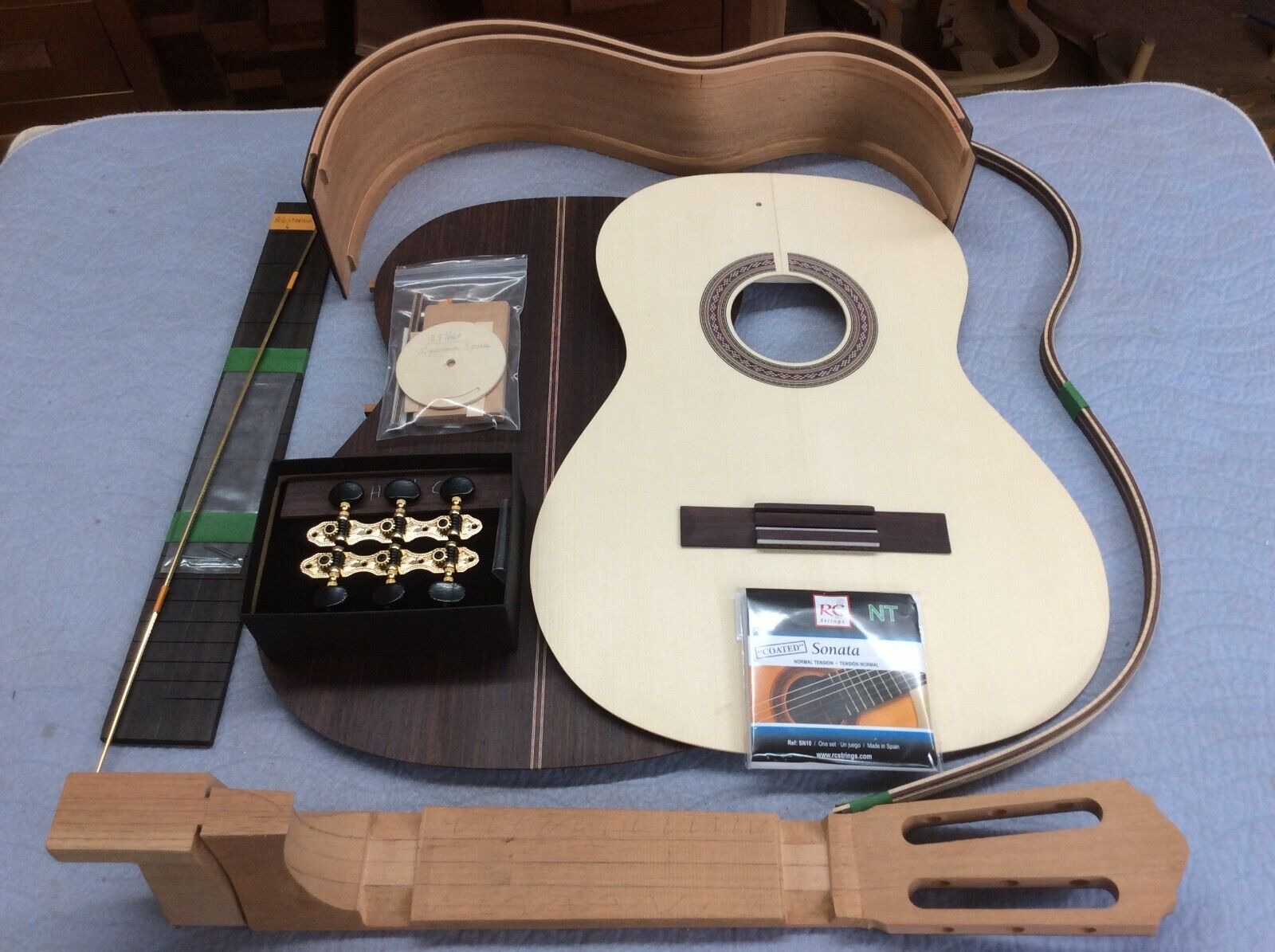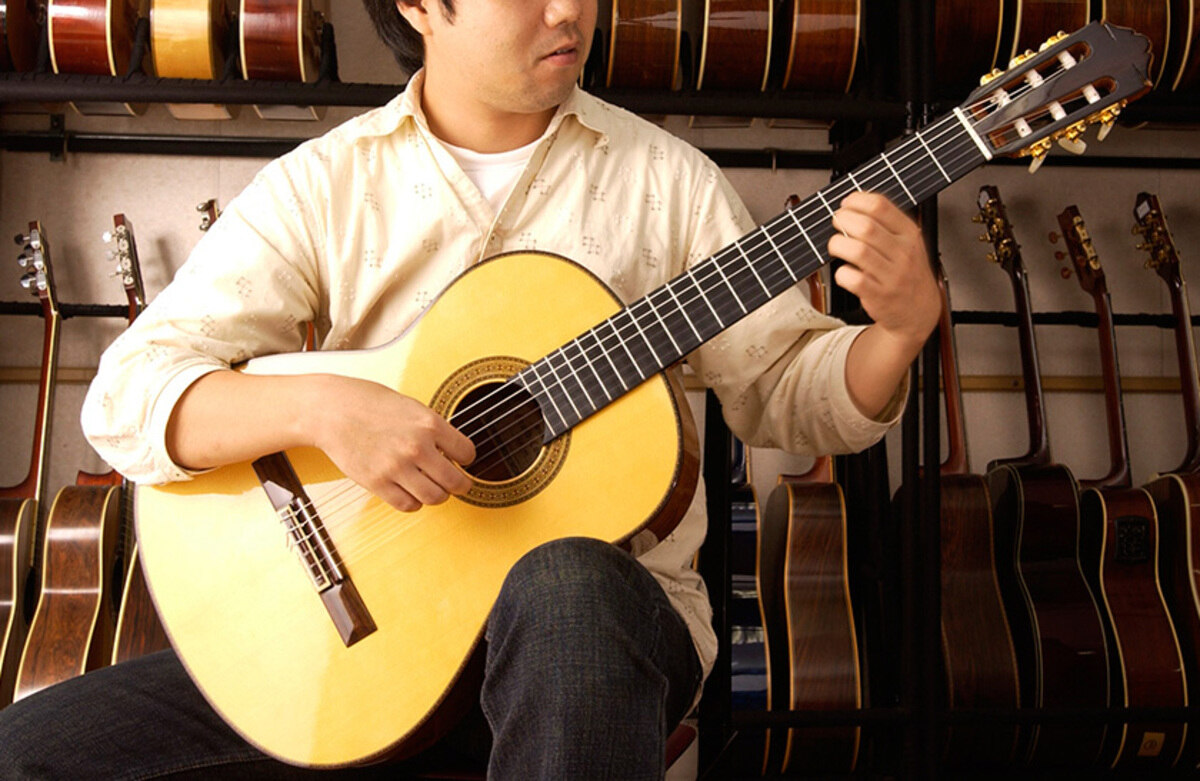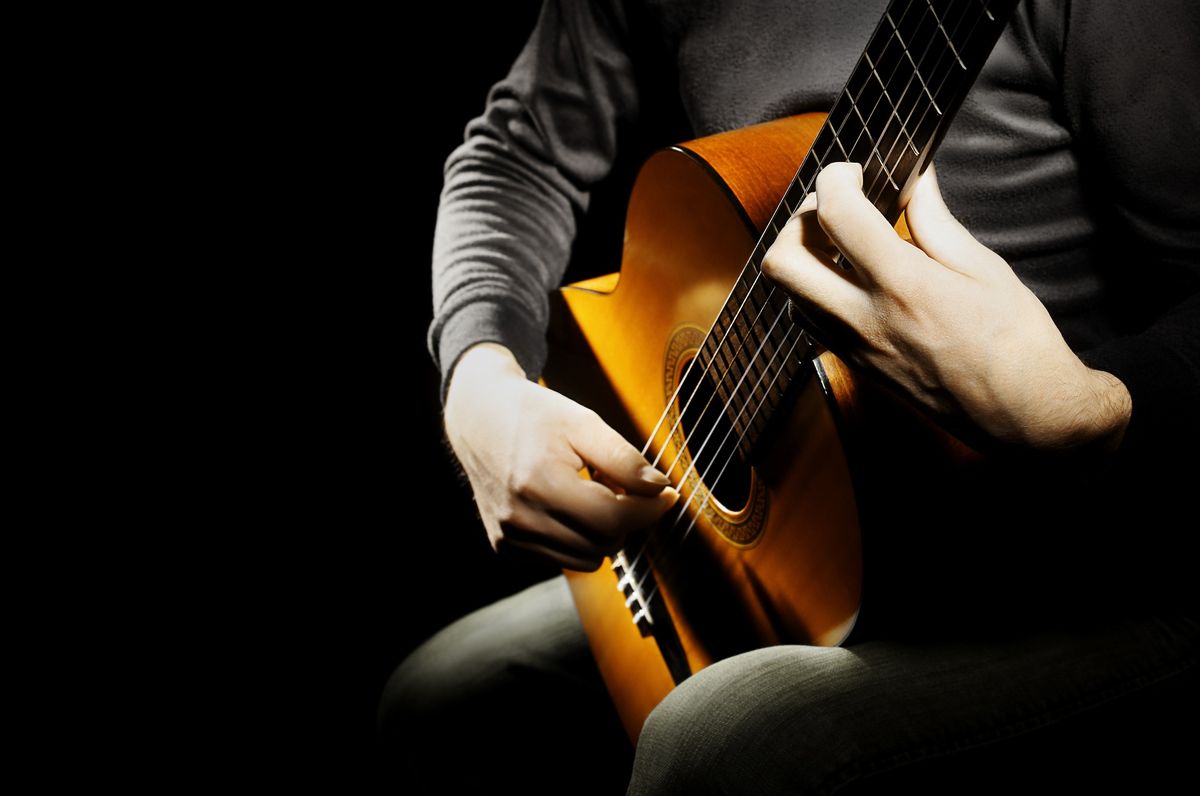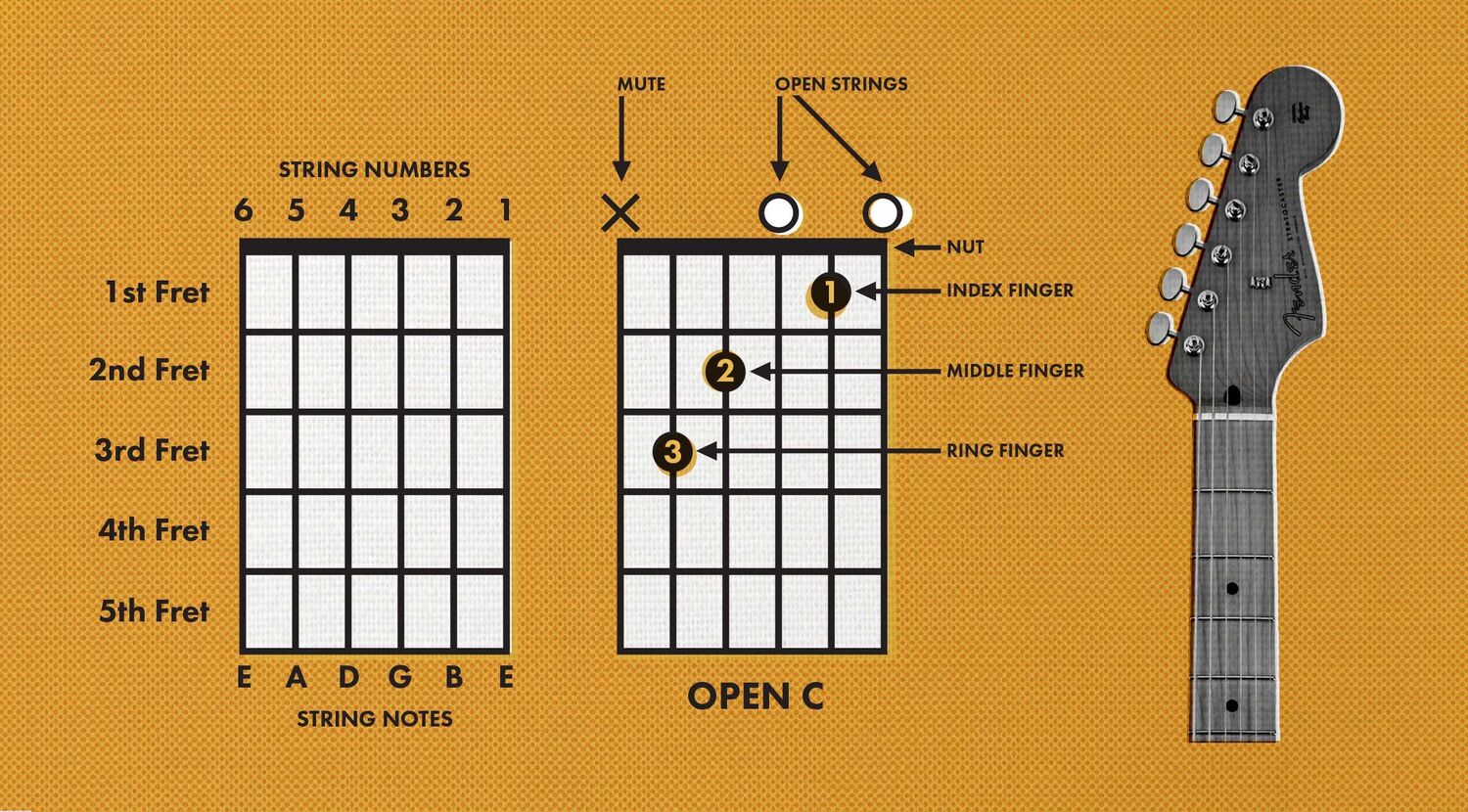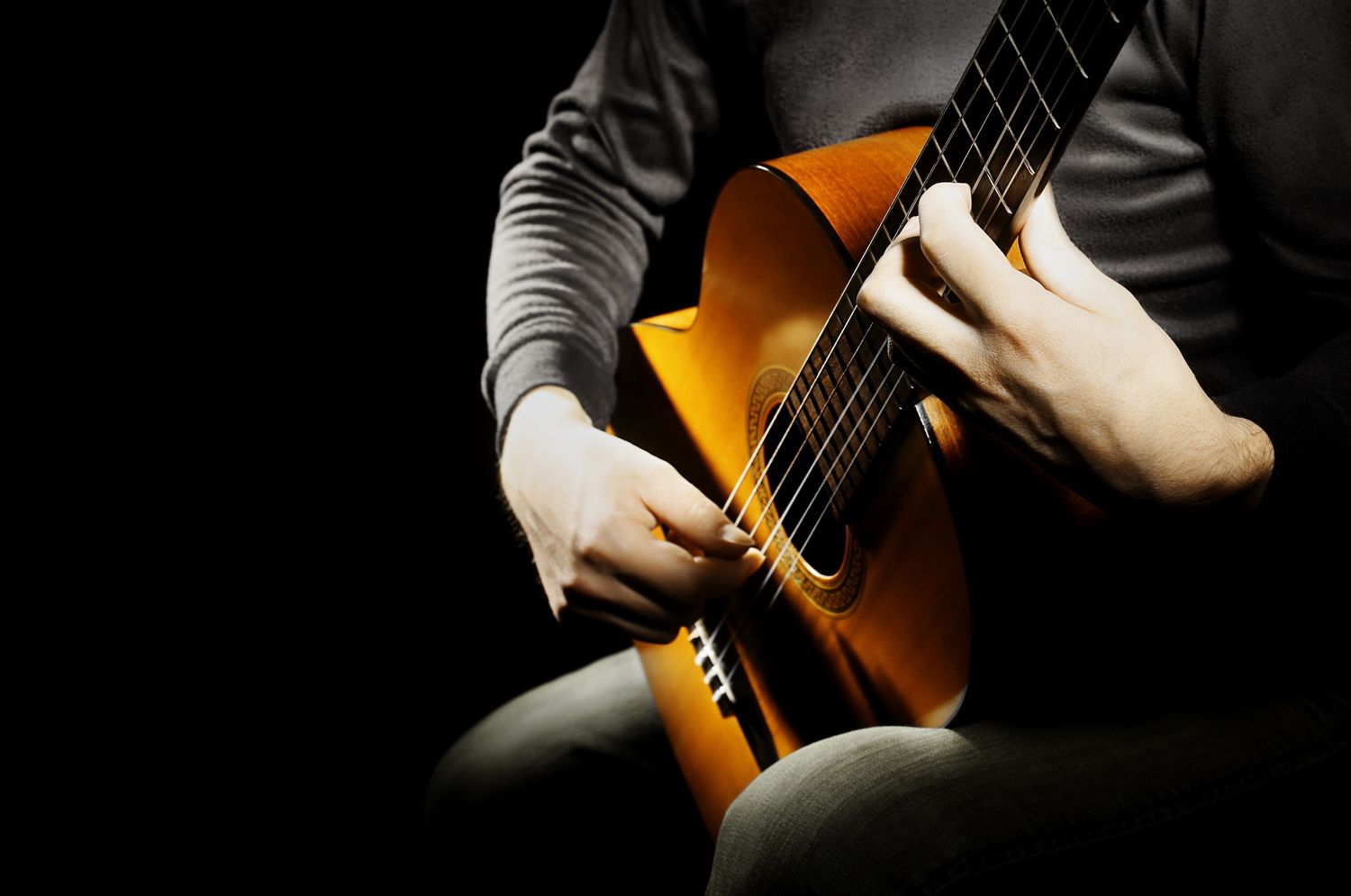

Classical
How To Read Classical Guitar Music
Modified: February 15, 2024
Learn how to read classical guitar music with our comprehensive guide. Master the techniques and notation for classical guitar pieces.
(Many of the links in this article redirect to a specific reviewed product. Your purchase of these products through affiliate links helps to generate commission for AudioLover.com, at no extra cost. Learn more)
Table of Contents
- Introduction
- Understanding the Staff
- Reading Notes on the Treble Clef
- Identifying Note Values and Durations
- Recognizing Common Time Signatures
- Understanding Key Signatures
- Reading Chords and Symbols
- Interpreting Dynamics and Articulations
- Analyzing Repeat Signs and Segno
- Applying Fingerings and Positions
- Playing Guitar Music with Proper Technique
- Conclusion
Introduction
Welcome to the world of classical guitar music! Whether you are a beginner or an experienced guitarist looking to expand your repertoire, learning how to read classical guitar music is an essential skill that will greatly enhance your playing ability. Classical guitar music is written on a staff, and it is important to understand the various elements that make up a piece of sheet music.
In this article, we will guide you through the process of reading and interpreting classical guitar music. We will cover topics such as understanding the staff, identifying note values and durations, recognizing time signatures, interpreting key signatures, reading chords and symbols, analyzing dynamics and articulations, and applying fingerings and positions. By the end of this article, you will have a solid foundation in reading classical guitar music and be well on your way to mastering this beautiful instrument.
Reading classical guitar music may seem daunting at first, especially if you are new to reading sheet music. However, with practice and patience, you will become more comfortable with the notation system and be able to decipher musical compositions with ease. It is important to approach this learning process with an open mind and a willingness to develop your musical skills.
In addition to reading notes and rhythms, it is crucial to develop proper technique while playing classical guitar. This includes hand positioning, fingerings, and the use of proper posture and hand motions. We will touch on these aspects as we explore the various elements of reading classical guitar music.
So, let’s dive in and begin our journey into the world of classical guitar music. Whether you want to perform classical pieces, compose your own music, or simply broaden your musical knowledge, learning to read classical guitar music is an invaluable skill that will open up a world of possibilities for your musical expression.
Understanding the Staff
The staff is the foundation of sheet music notation. It consists of five horizontal lines and four spaces, upon which musical symbols are placed to represent different pitches and durations. Each line and space on the staff corresponds to a specific note on the guitar.
The lines of the staff, from bottom to top, represent the notes E, G, B, D, and F using the acronym “Every Good Boy Deserves Fudge”. The spaces, from bottom to top, represent the notes F, A, C, and E using the acronym “F-A-C-E”.
When reading classical guitar music, it is important to know the names of the notes on each line and space. This will allow you to identify the pitches and play the correct notes on your instrument. Familiarize yourself with the names of the notes on the staff and practice associating them with their corresponding positions on the guitar neck.
In addition to the lines and spaces, the staff is also marked with a clef symbol at the beginning of each line. For classical guitar music, the most common clef used is the treble clef, which looks like a stylized letter “G. The treble clef indicates that the notes on the staff are in a higher register.
To further clarify the pitch of the notes, vertical lines called ledger lines are used above and below the staff. Ledger lines extend the staff to accommodate higher or lower pitches that are outside the range of the five lines and four spaces. These lines are used sparingly to avoid cluttering the notation.
Understanding the staff is essential for reading classical guitar music accurately. Take the time to study the staff and practice identifying notes and their positions on the guitar neck. This knowledge will serve as a solid foundation for your journey into reading classical guitar music.
Reading Notes on the Treble Clef
As mentioned earlier, the treble clef is the most common clef used in classical guitar music. It indicates that the notes on the staff are in a higher register. Now, let’s dive deeper into how to read notes on the treble clef.
Each line and space on the treble clef staff represents a different pitch. The notes on the lines of the treble clef, from bottom to top, are E, G, B, D, and F using the “Every Good Boy Deserves Fudge” acronym. The notes on the spaces, from bottom to top, are F, A, C, and E using the “F-A-C-E” acronym.
When a note is placed on a line or space, it indicates the pitch or the specific note to be played on the guitar. For example, if a note is placed on the second line from the bottom, it represents the note G. Similarly, if a note is placed on the second space from the bottom, it represents the note A.
In addition to the specific note name, the position of the note on the staff also indicates its pitch. Higher notes are positioned higher on the staff, while lower notes are positioned lower. This allows guitarists to navigate the fretboard and play the correct pitches on their instrument.
To aid in accurately reading notes on the treble clef, there are additional symbols called accidentals that modify the pitch of a note. The most common accidentals are the sharp (#), flat (♭), and natural (♮) symbols. A sharp raises the pitch of a note by a half step, while a flat lowers the pitch by a half step. A natural cancels out any previous sharp or flat and returns the note to its original pitch.
By understanding the treble clef and the notes represented on it, you will be able to read and play classical guitar music more proficiently. Practice identifying notes on the treble clef staff and associating them with their positions on the guitar neck. This will help you translate the musical notation into actual sounds on your instrument.
Identifying Note Values and Durations
In classical guitar music, notes are used to represent the duration or length of a sound. Each note has a specific value, indicated by its shape and any additional symbols it may have.
The most common types of notes you will encounter in classical guitar music are whole notes, half notes, quarter notes, eighth notes, and sixteenth notes.
- A whole note (♩) is a note with a hollow oval shape and represents four beats or counts of sound.
- A half note (½) is a note with a solid oval shape and represents two beats or counts of sound.
- A quarter note (¼) is a note with a solid oval shape and a stem attached. It represents one beat or count of sound.
- An eighth note (⅛) is a note with a solid oval shape, a stem, and a flag attached. It represents half a beat or count of sound.
- A sixteenth note (1/16) is a note with a solid oval shape, a stem, and two flags attached. It represents a quarter of a beat or count of sound.
In addition to these basic note values, dots can be added to prolong the duration of a note. A dotted note adds half of the note value to itself. For example, a dotted half note is worth three beats, while a dotted quarter note is worth one and a half beats.
In classical guitar music, you will often come across different note durations within the same piece. These different values are used to create rhythmic patterns and add variety to the music. Pay attention to the time signature, which represents the organization of beats in a measure, to help you determine the relative length of each note.
By understanding and identifying the different note values and durations, you will be able to accurately interpret the rhythm and timing in classical guitar music. Practice sight-reading exercises to improve your ability to quickly recognize and play notes of different durations. This will greatly enhance your ability to perform classical guitar pieces with precision and musicality.
Recognizing Common Time Signatures
Time signatures play a crucial role in classical guitar music, as they indicate the organization of beats within a measure. The time signature is typically placed at the beginning of a piece or section and consists of two numbers stacked on top of each other.
The top number of the time signature represents the number of beats in each measure, while the bottom number represents the value of each beat. The bottom number is usually a power of 2, indicating the type of note that receives one beat.
Let’s take a look at some of the most common time signatures in classical guitar music:
- 4/4 Time Signature (Common Time): This is the most common time signature in classical music. The top number 4 indicates that there are four beats in each measure, and the bottom number 4 indicates that a quarter note receives one beat. Each measure typically consists of four quarter notes or a combination of note values equivalent to four quarter notes.
- 3/4 Time Signature (Waltz Time): This time signature is often associated with waltz music. The top number 3 indicates that there are three beats in each measure, and the bottom number 4 indicates that a quarter note receives one beat. Each measure typically consists of three quarter notes or a combination of note values equivalent to three quarter notes.
- 2/4 Time Signature (Cut Time): This time signature is often used in duple meter music with a brisk tempo. The top number 2 indicates that there are two beats in each measure, and the bottom number 4 indicates that a quarter note receives one beat. Each measure typically consists of two quarter notes or a combination of note values equivalent to two quarter notes.
These are just a few examples of common time signatures, but there are many others used in classical guitar music, such as 6/8, 9/8, and 12/8. It is important to carefully read and interpret the time signature at the beginning of a piece to understand the rhythmic structure and how the beats are grouped.
By recognizing and understanding common time signatures, you will be able to accurately count and feel the rhythm in classical guitar music. Practice clapping or tapping along to different time signatures to improve your sense of timing and internalize the rhythmic patterns.
Understanding time signatures will greatly enhance your ability to read and play classical guitar music with precision and expressive phrasing.
Understanding Key Signatures
In classical guitar music, key signatures play a pivotal role in determining the tonality of a piece. A key signature is a set of sharps or flats placed at the beginning of a staff to indicate the key in which the piece is written. Understanding key signatures is essential in accurately reading and interpreting classical guitar music.
Key signatures are represented by a series of sharp (#) or flat (♭) symbols placed on specific lines or spaces of the staff. The number of sharps or flats in the key signature corresponds to a specific key.
Let’s take a look at some common key signatures:
- C Major/A Minor: This is known as the key of no sharps or flats. In the key of C Major, the key signature does not have any sharp or flat symbols. The corresponding relative minor key is A Minor.
- G Major/E Minor: This key signature consists of one sharp symbol (F♯). The key of G Major has an F-sharp in its key signature, while its relative minor key, E Minor, also has one sharp, which is the leading tone.
- D Major/B Minor: This key signature consists of two sharp symbols (F♯ and C♯). The key of D Major has an F-sharp and a C-sharp in its key signature, while its relative minor key, B Minor, also has the same two sharps.
- A Major/F♯ Minor: This key signature consists of three sharp symbols (F♯, C♯, and G♯). The key of A Major has an F-sharp, C-sharp and G-sharp in its key signature, while its relative minor key, F♯ Minor, also has the same three sharps.
- E Major/C♯ Minor: This key signature consists of four sharp symbols (F♯, C♯, G♯, and D♯). The key of E Major has an F-sharp, C-sharp, G-sharp, and D-sharp in its key signature, while its relative minor key, C♯ Minor, also has the same four sharps.
Similarly, key signatures with flats represent keys with a different tonality. For example, the key of F Major has one flat symbol (B♭), while the key of B♭ Major has two flat symbols (B♭ and E♭).
Understanding key signatures will guide you in determining which notes to play as sharps or flats throughout a piece. It is crucial to understand the key signature at the beginning of a piece, as it affects the tonality and overall character of the music.
Practice identifying key signatures and their corresponding keys to become proficient in recognizing and interpreting classical guitar music. This knowledge will greatly enhance your ability to play with accuracy and musicality, as you will be able to align your playing with the intended tonal framework of the composition.
Reading Chords and Symbols
In classical guitar music, chords are represented by chord symbols or chord diagrams. Chord symbols consist of letters and additional symbols that indicate the type of chord to be played. Understanding how to read chords and symbols is crucial for playing chord progressions and accompaniment parts in classical guitar music.
Chord symbols typically follow standard music notation above the staff. The most common chord symbols include the root note followed by additional letters or symbols that represent the quality of the chord. For example, a capital letter “C” represents a C major chord, while a lowercase “c” represents a C minor chord. Other symbols such as “+” or “aug” indicate an augmented chord, and “-” or “dim” indicate a diminished chord.
In addition to chord symbols, chord diagrams are often used to provide a visual representation of chord fingerings on the guitar. Chord diagrams consist of a grid with vertical lines representing the strings and horizontal lines representing the frets. Circles or dots are placed on the grid to indicate where to place your fingers on the guitar neck to form the chord.
When reading chord diagrams, the vertical lines represent the guitar strings, and the horizontal lines represent the frets. The circles or dots on the grid indicate the finger placement on specific strings and frets. For example, a dot on the fifth string and the third fret indicates that you should place your finger on the third fret of the fifth string to form the chord.
Chord symbols and diagrams work in tandem to provide guitarists with the necessary information to play chords accurately. By understanding chord symbols and reading chord diagrams, you will be able to play various chords and progressions in classical guitar music.
It is essential to familiarize yourself with common chord types and their symbols. Practice playing chords from sheet music, and use chord diagrams as a visual reference to ensure proper finger placements. As you become more comfortable with reading chords and symbols, you will be able to confidently accompany melodies and create harmonies in your classical guitar playing.
Interpreting Dynamics and Articulations
Dynamics and articulations are crucial elements in classical guitar music that convey the expression, mood, and phrasing of a piece. They provide instructions on how to play the music with specific nuances and emphasis. Understanding how to interpret dynamics and articulations is essential for bringing a piece to life and adding depth to your performance.
Dynamics are indications of the volume or intensity of the sound. They are usually represented by Italian terms and symbols. Here are some common dynamics you may encounter:
- pp (pianissimo): Very soft
- p (piano): Soft
- mp (mezzo piano): Moderately soft
- mf (mezzo forte): Moderately loud
- f (forte): Loud
- ff (fortissimo): Very loud
These dynamic markings guide you on how to shape your playing in terms of volume, highlighting the contrast between soft and loud sections and adding emotional impact to the music.
Articulations, on the other hand, provide instructions on how to play each note in terms of attack, duration, and connection between notes. Here are some common articulation markings:
- Staccato: Play the note short and detached
- Legato: Play the notes smoothly and connected
- Accent: Emphasize the note with a slight emphasis or stress
- Slur: Play all the notes under the slur in a single continuous motion without rearticulating
- Tremolo: Rapidly alternate between two or more notes
Articulations enhance the musical phrasing and facilitate the interpretation of the composer’s intentions. They add a sense of fluidity, clarity, and expression to your playing.
When interpreting dynamics and articulations, it is important to carefully analyze the sheet music and understand the specific markings and their intended effects. Experiment with different nuances and consider the overall context and style of the piece to deliver a well-rounded performance.
Listening to recordings of renowned classical guitarists can also be beneficial in understanding how various dynamics and articulations are applied in practice. Pay attention to their subtle variations, as it can inspire your own interpretation.
By effectively interpreting dynamics and articulations, you will enhance the expressiveness of your playing, allowing you to convey the music’s emotional depth and captivate your audience.
Analyzing Repeat Signs and Segno
In classical guitar music, repeat signs and the “segno” symbol are used to indicate specific sections that should be repeated during a performance. Understanding how to analyze and navigate these markings is essential for accurately interpreting and playing a piece.
Repeat Signs: Repeat signs consist of double vertical lines with dots placed on either side. They indicate that a section of music should be played again. There are two main types of repeat signs:
- Single Repeat: A single repeat sign (|: :|) indicates that the section of music between the repeat signs should be played twice. When you reach the second repeat sign, go back to the first repeat sign and play the section again before moving on.
- Double Repeat: A double repeat sign (||: :||) indicates that the entire section of music between the repeat signs should be played twice, similar to the single repeat. However, when you reach the second repeat sign, instead of going back to the first repeat sign, move on to the following section of the piece.
By recognizing these repeat signs, you can navigate the piece more efficiently and ensure the prescribed repetitions are incorporated into your performance.
Segno: The “segno” symbol is an important marking used to direct the performer to a specific point in the music. It consists of a stylized letter “S” with a diagonal line (ɔ) through it, placed above the staff. When you encounter a segno symbol, follow these steps:
- Locate the “segno” symbol in the music.
- Play until you reach the “segno” symbol.
- When you reach the “segno” symbol, skip back to the corresponding “dal segno” (D.S.) marking, which is usually placed earlier in the music.
- Resume playing from the “dal segno” marking, continuing until the end of the piece or until further instructions are given.
The segno symbol allows for non-linear progression through a piece, offering variety and structure to the performance.
When analyzing repeat signs and the segno symbol, it is important to carefully examine the sheet music and take note of the specific instructions provided. As you become more familiar with these markings, you will be able to navigate the structure of the piece more effectively and ensure that the repeated sections or the jump to the segno are executed seamlessly.
By accurately interpreting and executing repeat signs and the segno symbol, you can bring a well-planned and deliberate structure to your classical guitar performance, enhancing the overall cohesion and musicality of the piece.
Applying Fingerings and Positions
When reading classical guitar music, it is important to apply appropriate fingerings and positions on the fretboard. By strategically assigning fingers to specific notes and utilizing different fret positions, you can ensure efficient and accurate playing of the music. Understanding how to apply fingerings and positions is crucial for smooth execution and optimal performance.
Fingerings provide guidance on which fingers to use for each note or chord. They are usually indicated by numbers on the sheet music, with each number representing a specific finger:
- 1: Index finger (first finger)
- 2: Middle finger (second finger)
- 3: Ring finger (third finger)
- 4: Pinky finger (fourth finger)
Applying fingerings allows for efficient movement and enables you to transition smoothly between notes and chords. Proper fingerings also help you maintain a good hand position and posture while playing.
In addition to fingerings, utilizing different fret positions is essential for efficient playing and expanding your range on the guitar. Different positions involve shifting the hand up or down the neck to access different notes. This allows you to play melodies, scales, and chords in different areas of the fretboard, providing versatility and options for interpretation.
When applying fingerings and positions, consider the following:
- Be aware of hand and finger placement to ensure proper technique and optimal sound production.
- Experiment with different fingerings and positions to find what works best for your hand size and comfort while maintaining good technique.
- Practice slowly and gradually increase speed to develop muscle memory and accuracy in executing fingerings and position changes.
- Use guide fingers when transitioning between positions. A guide finger is a finger that stays in place while others move around it, providing stability and reference.
By applying appropriate fingerings and positions, you gain control and precision in your playing. This allows you to tackle complex passages, reach difficult stretches, and execute challenging techniques with ease.
Remember, fingerings and positions in classical guitar music are not static and can vary based on personal preference and musical interpretation. Use your knowledge of fingerings and positions as a foundation and adapt as necessary to suit the demands of the music and your own playing style.
Playing Guitar Music with Proper Technique
Mastering proper technique is essential for playing classical guitar music with precision, control, and sound quality. Developing good technique not only ensures efficient and accurate execution of the music but also prevents strain or injury to your hands and fingers. Here are some key elements to keep in mind when playing guitar music with proper technique:
- Hand Position: Maintain a relaxed and natural hand position. The thumb should be placed behind the neck, providing support and stability. The fingers should be curved and placed near the frets for optimal control.
- Finger Placement: Use the fingertips to press down on the strings, just behind the metal frets. Press with the tips of the fingers, avoiding any touching or muting of adjacent strings.
- Posture: Sit or stand with good posture, keeping your back straight and shoulders relaxed. This helps with breathing, endurance, and overall comfort while playing.
- Strumming and Picking: Strum or pick the strings using a combination of wrist and finger movements. Practice alternate picking, where you use both upstrokes and downstrokes, for smooth and even articulation.
- String Control: Mute or dampen unwanted strings with the palm of your hand or by lifting fingers slightly off the strings. This ensures clean and clear sound production.
- Articulation and Expression: Vary the pressure, speed, and direction of your musical gestures to achieve expressive phrasing. Pay attention to dynamics, accents, and legato playing to bring out the nuances of the music.
- Practice and Patience: Regular and focused practice is key to developing proper technique. Start with slow and deliberate practice, gradually increasing speed and complexity. Be patient with yourself and allow time for muscle memory and control to develop.
Proper technique provides a solid foundation for your classical guitar playing. It allows you to navigate the fretboard smoothly, play complex passages with accuracy, and produce a beautiful tone.
Enlist the guidance of a qualified guitar teacher or utilize educational resources to help you develop and refine your technique. They can provide valuable insights, corrections, and exercises tailored to your needs.
Remember, technique is not an end in itself, but a means to fully express the music. Balance technical proficiency with musicality, paying attention to phrasing, dynamics, and emotional interpretation. By combining proper technique with artistic expression, you can create captivating and engaging performances.
Conclusion
Congratulations! You have reached the end of this comprehensive guide on how to read and play classical guitar music. By understanding the staff, notes, dynamics, articulations, and other elements discussed in this article, you now possess the tools to embark on a fulfilling journey into the world of classical guitar music.
Remember that learning to read classical guitar music takes time and practice. Start with simple pieces and gradually work your way up to more complex compositions. As you become more comfortable with reading sheet music, challenge yourself with new techniques and musical styles.
In addition to studying music notation, it is crucial to dedicate time to developing proper technique and musical expression. Playing with a relaxed hand position, utilizing appropriate fingerings and positions, and understanding dynamics and articulations will greatly enhance your playing ability and musicality.
Along your musical journey, seek guidance from experienced guitarists or instructors who can provide valuable feedback and insights. Embrace the opportunity to perform in front of others, whether in formal settings or informal jams, as it will help you grow as a musician and gain confidence in your abilities.
Finally, remember to enjoy the process. Playing classical guitar music is a rewarding and fulfilling experience. Immerse yourself in the beauty of the melodies, the richness of the harmonies, and the expressive possibilities of the instrument. Let the music inspire you and ignite your passion.
Now, pick up your guitar, open a piece of sheet music, and dive into the world of classical guitar music. Embrace the challenge, the joy, and the endless possibilities that await you. Happy playing!

